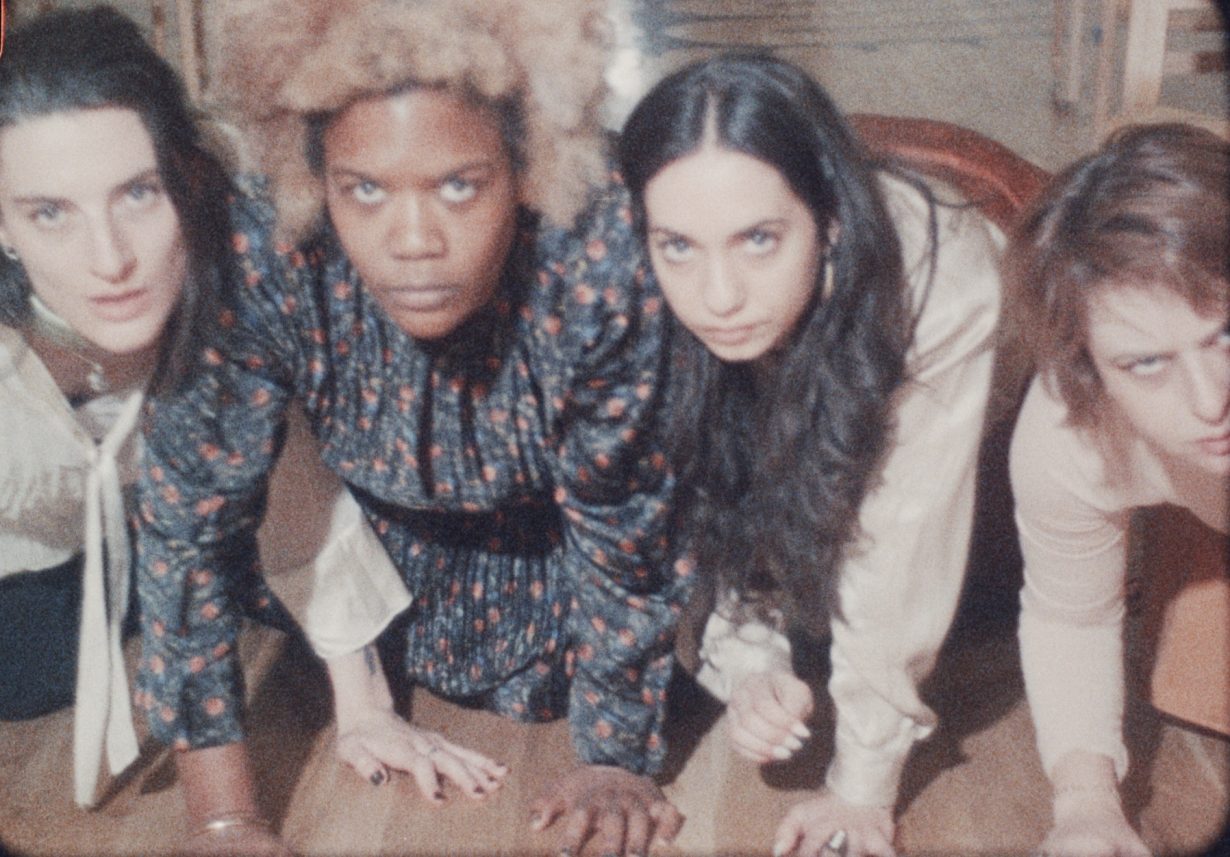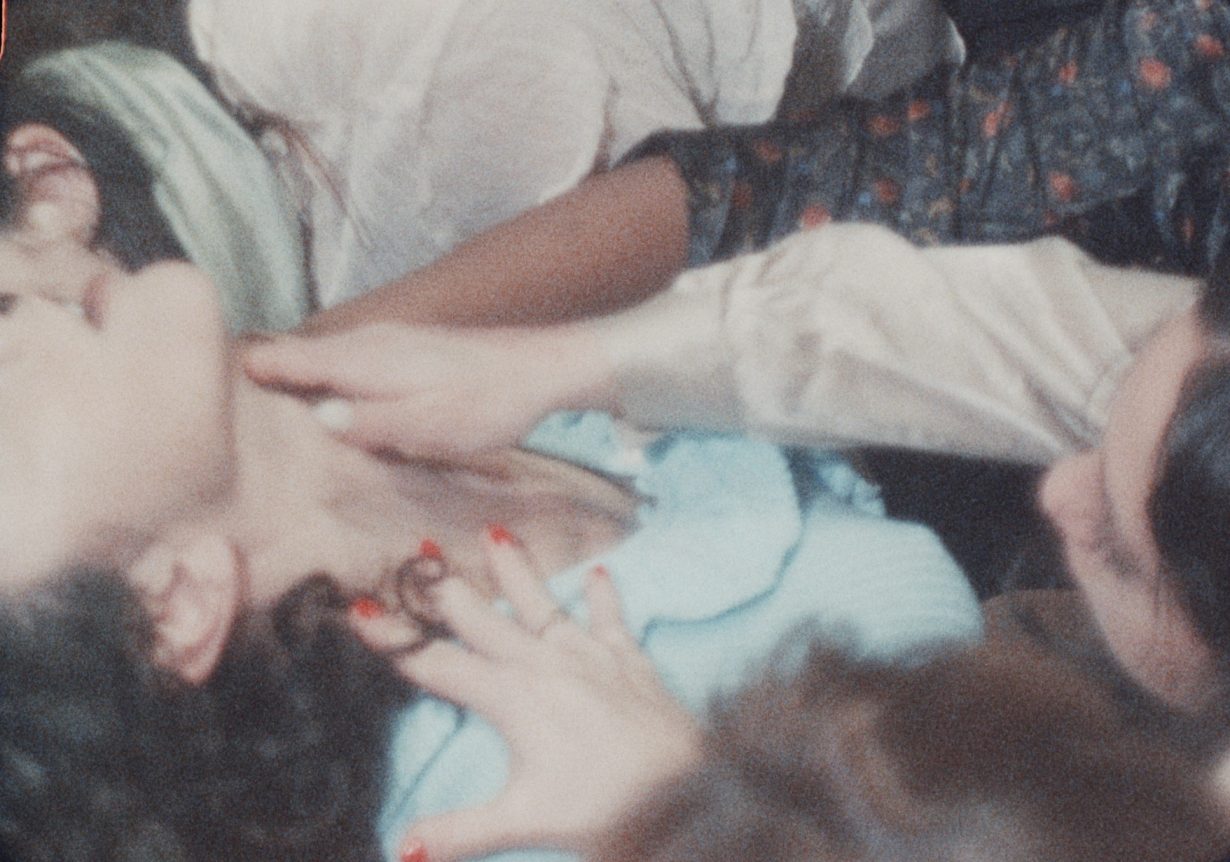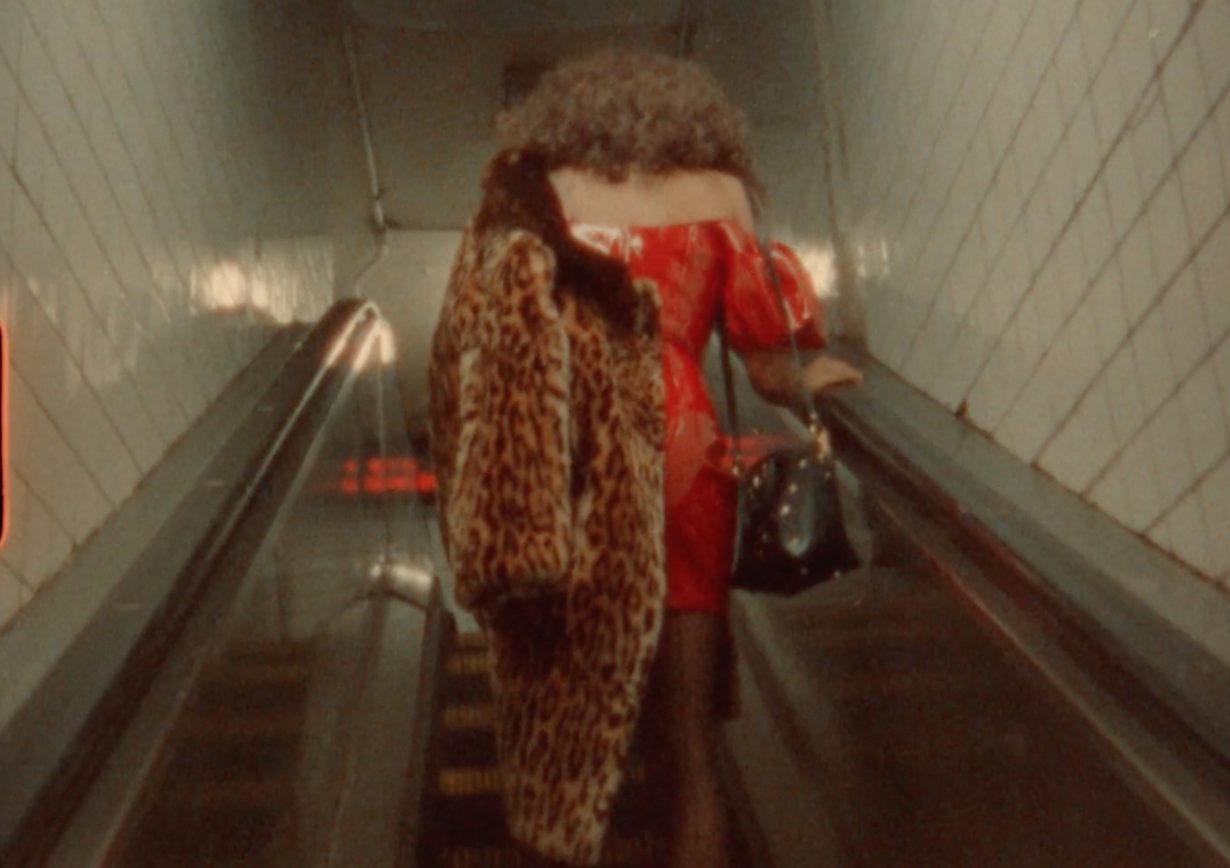The films of Ayanna Dozier reclaim the stigmatised figure of the ‘whore’ to portray sexual labour as neither a feminist gesture nor an exploitative trap
‘The first man I learned to serve was Christ and he was a model for all men to follow,’ writes artist and critic Ayanna Dozier in an essay published on the occasion of her recent exhibition at Microscope Gallery in New York this spring. On display, among photographs printed on various leathers, are several of the artist’s short films, including A Whore in the House of the Lord (2025), inspired by Dozier’s own adolescent experience of attending a Christian fundamentalist church. Though her exploration of both the psychosexual trappings of evangelism and the suppression of libidinal desires by belief systems is playful, the link between sex and religion are nonetheless explicit: ‘Both acts of submission required me to be on my knees.’
Over eleven minutes, A Whore in the House of the Lord focuses on the subservient gestures common of both church and state, and foregrounds their erotic potential: for instance, the nervous hands of a fictional church congregation – played, not quite straight, by a group of the artist’s friends – as they twiddle and tug at the hems of their skirts. (If they were wearing pearls, they would be clutching them.) They watch anxiously as the titular ‘whore’, wearing a powder-blue, butt-skimming baby-doll dress with knee-high socks, enacts a wild spectacle of repentance in the pews. She prostates herself on the floor, crawls on all fours towards the pulpit, then falls back in a paroxysm of exposed panties, recalling the overblown performances of starlets from both early cinema and the queer underground films of artists like Kenneth Anger and Jack Smith. Intercutting these scenes are gothic intertitles that move between Dozier’s own personal observations and religious quotation; the misogynist teachings of the controversial Christian fundamentalist pastor Wayman Mitchell prominently feature, which, among other things, link women’s health to sexual promiscuity and hatred of men, chiming uncomfortably familiar in our Trumpian era of snake-oil merchantry and reactionary charlatanism. Where Mitchell equates women’s bodies with sexual sin, moral decay and devil worship, Dozier’s work offers a vital alternative, seeking to reclaim queer feminine erotics within spaces (such as the church and the kerbside) that have historically antagonised women, and particularly Black femme sex workers.


At this year’s Berwick Film and Media Arts Festival in the UK, Dozier’s work was the subject of a revelatory artist focus that brought together much of her recent moving-image work for the first time (only individual films have so far screened at British film and moving image festivals such as Alchemy and Open City). The programme of short films (mostly shot on Super-8 with some work, like A Whore…, in 16mm) explored carnal desire and its policing against a matrix of wider histories. There has been a creeping erosion of even basic rights for sex workers in the US in recent years, with reports of sex workers being targeted, detained and questioned at the US border, while Trump’s administration looks to further endanger the sexual and reproductive freedoms of millions. And with the sex-work fantasia Anora (2024) sweeping the board at this year’s Oscars, you could say it’s refreshing to see sexual labour explored critically, something Dozier does in her films by placing it in the context of state surveillance, racial profiling and the flattening effects of urban gentrification. (The artist’s own critique of Anora, ‘The 24-Hour Working Girl’ aptly described the film as ‘a client’s take on Cinderella’.)
Dozier uses the term ‘whore’ pointedly. Last month, when the artist curated a series of films at New York’s Anthology Film Archives about (and largely by) sex workers, titled Women, Workers, and Whores on Film, she explained how the term reflected ‘the social reality of sex workers who are stigmatised and criminalized for their labour, and it is a term I use in solidarity with myself and other people in the sex industry’. Sex worker might be the more socially acceptable phrase – hell, even centrist dads are bandying it about – but as Dozier, who often uses this term herself, also points out, it can reinforce ‘the idea that one’s humanity must be tied to their love of work’. By extension, the artist doesn’t portray sexual labour in her artworks as either a sex-positive, identity-affirming feminist gesture or an exploitative trap.
When sex work is represented, it is often left intentionally ambivalent. Take the short Nightwalker (2022), which (despite its suggestive title) never makes clear whether the young woman, played by Dozier, is working the streets or simply walking home from a night out. The handheld camera stalks her at close range like a predator, in the claustrophobic style of Michael Powell’s Peeping Tom (1960), emphasising the blurred lines between surveillance and violence. As high heels clack clack in the night, the film ratchets up the tension by having the sound fall out of sync with the image in an increasingly frenetic rhythm. Nightwalker is related to an earlier installation by Dozier called Solicitations of Crimes Against Nature (2021), which centres on a quilt made of 64 Polaroids stitched together with red thread. In the candid snapshots, we see the artist frozen in positions that police have historically considered to be that of ‘soliciting sex’. The poses are striking by their ordinariness: Dozier is sat on steps, standing on a street corner, rummaging through her handbag, or leaning against the window of a bakery. In the background of the installation, her voice emanates from the boombox, reading from legislation that has prohibited sex work. The flat delivery makes its implications clear: bodies are tied up by arbitrary laws, while the policing of sex work unduly targets people of colour, reaffirming criminal stereotypes and putting individuals in even greater danger.


These images offer a pertinent reminder of how photography has been used, almost since its inception, as an instrument of the state to monitor dissidence (a point recently explored in Resistance, a show about photography and protest curated by Steve McQueen at Margate’s Turner Contemporary, in which clandestine snapshots of suffragettes were presented as some of Britain’s earliest examples of surveillance photography). Dozier’s film Bounded Intimacy (2024) plays with the ambiguity behind the camera’s alternately surveillant and desirous gaze. A shaky, handheld film camera tracks the modern New York skyline before gradually zooming in on a woman in red hotpants. She is walking the streets of Chelsea and Tribeca, now-fancy districts that once had a bustling sex trade but have since been subject to successive ‘clean-up’ initiatives. When the film cuts to street level, the camera movement calms down and the monitoring gaze switches to an erotic one, as both the woman and cameraperson engage in a more intimate and embodied back-and-forth.
In these films and artworks, erotic labour plays out against a rapidly changing backdrop of gentrification that is transforming former neighbourhood strongholds for cruising and the sex trade into faceless luxury property, displacing workers further to the margins. Through her analogue film practice, and her close attention to the textures of latex, leather, and leopard print in both costuming and photographic material, Dozier indirectly evokes the punk portraiture of that most New York movement of underground filmmakers and musicians known as No Wave, which sprung up from the city rubble in the late 1970s and early 1980s and often presented prostitution as just another form of performance. But there is little in the way of period fetishisation or nostalgia here. As critic Davey Davis reminds us in Artforum, ‘the suppression of sex workers, queers, and other deviants is an analog tradition.’ Sex work, famously hailed as the oldest profession, has long been a subject of filmmaking and photography. By shooting on the never-quite obsolete medium of celluloid film, Dozier reminds us of sex work’s stubborn persistence and, through the warm graininess of its images, summons the fragility of our intimate and bodily freedoms. These are freedoms we must fight for at all costs.
Sophia Satchell-Baeza is a London-based writer and film programmer
